ST. CLAIR, Mich.—Dr. Sushma Reddy likes to tell young students that walking is to the body what reading is to the mind.
She so strongly believes in this mantra that the St. Clair doctor started a program five years ago called Walk for Summer Reading.
And what began with a brain flash of an idea, tested with 200 students at Cleveland Elementary School in Port Huron, has grown Walk for Summer Reading into a popular program at 23 St. Clair County schools.
As an endocrinologist, Reddy deals with diabetes and is affected when she sees children who get Type 2 diabetes, which can be prevented.
Reddy says the concerns in St. Clair County are well-founded. One-third of children at a recent kindergarten roundup were at high risk for becoming obese, and 40 percent of middle school students have a family history of diabetes. These trends coupled with lack of physical activity led Reddy to fear an epidemic of Type 2 diabetes for community children.
Moreover, Reddy is also passionate about education, believing that every child should be able to read.
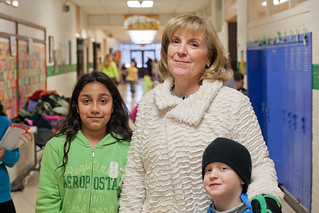
Combining her health and educational concerns for underprivileged kids, Walk for Summer Reading was piloted in February of 2009 at Cleveland Elementary School where 90 percent of the students qualify for free or reduced price lunch.
As a member of the St. Clair Medical Society, Reddy wrote a letter to fellow physicians asking for their support to buy books for the program.
“In three or four weeks, I had $4,000, and all I needed was $2,000,” recalls Reddy. “I was absolutely shocked because physicians are very philanthropic, but they’re very forgetful.”
For 14 weeks, the 211 Cleveland Elementary students walked for 15 minutes in the morning before school began. After students completed their walking requirements, the school purchased 1,300 books with the funds, with each participating student receiving four to nine books, depending on grade level.
The next year, Reddy approached three more schools in different areas of the county, and the program continued to expand yearly. St. Clair County Medical Society is still the primary sponsor, but hospitals, banks and other philanthropic organizations are now lending support.
While the primary goal of Walk for Summer Reading is to get children moving to prevent obesity, promote healthy lifestyles, and curb summer reading loss, other pleasant results surfaced.
“We found there were unintended consequences,” says Reddy. “The kids were now on time for school because they wanted to walk in the morning. It was a big social event. Parents wanted to walk too.”
In fact, of the 11 schools that walk in the morning, eight schools have noticed a decrease in tardiness.
The principal and teachers also observed less fighting in the classroom and heightened attentiveness. Children bonded with each other and with their teachers, who walked with them. In one school, social workers walked with the students.
“The social workers were able to solve a lot of problems with the kids just walking,” says Reddy. “Those kids were very comfortable coming up to them and talking, where they wouldn’t have otherwise.”
Schools love the program, partly because of its flexibility; they can run it how they want as long as the children walk for 15 minutes a day, three days a week for a minimum of eight weeks. Some schools walk before school, others at lunch and others after school. Parent volunteers, teachers, administrators or others organize it.
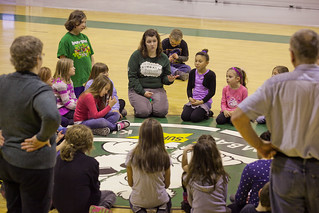 Reddy says that the schools are also receptive because they want students to have healthier lifestyles, but with curriculum requirements, MEAP preparation and other demands, they don’t always have the time to devote to encouraging healthy lifestyles for kids.
Reddy says that the schools are also receptive because they want students to have healthier lifestyles, but with curriculum requirements, MEAP preparation and other demands, they don’t always have the time to devote to encouraging healthy lifestyles for kids.
“We provide the jump start to get it going,” says Reddy. “And once they get it going, they want to continue it.”
Nine schools have started walkathons as fundraisers; seven schools now have year-round walking clubs; and ten schools have running clubs. Many of the schools have looped in nutrition education around healthy eating as part of their walking programs or special events.
“It’s helped to promote a culture of healthy lifestyles in the schools,” says Reddy. “So instead of doing candy sales, the schools now do walkathons to raise funds.”
Most importantly, the kids have embraced the program and enjoy the challenge of pursuing the reward: brand new books to take home.
“They love that they walked to get that book,” says Reddy. “And they want to read it because they earned it.”
To start a program in your community to get kids active and reading, e-mail Dr. Sushma Reddy.


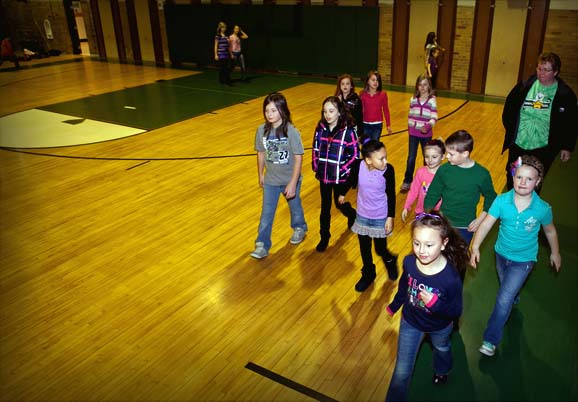

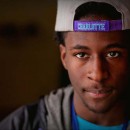


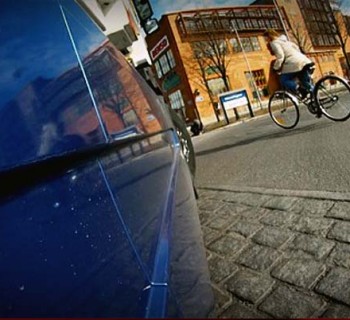



[…] community doctors concerned about child obesity, Dr. Sushma Reddy and Dr. Randa Jundi-Samman, helped the foundation develop a plan. Reddy knew someone who had […]